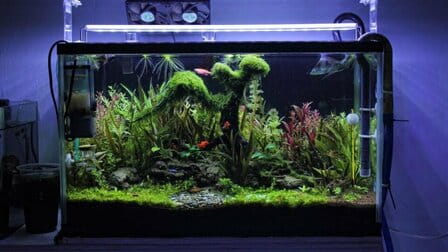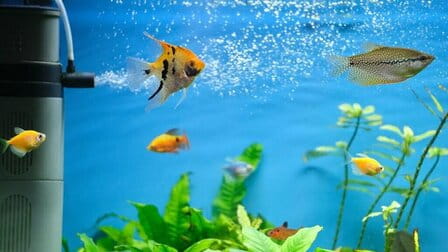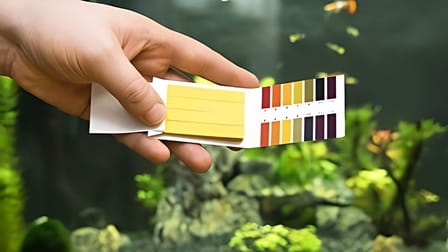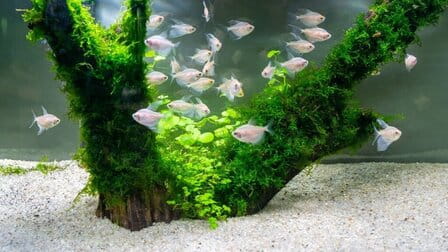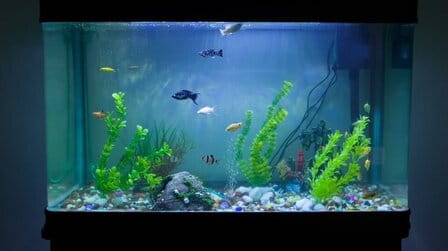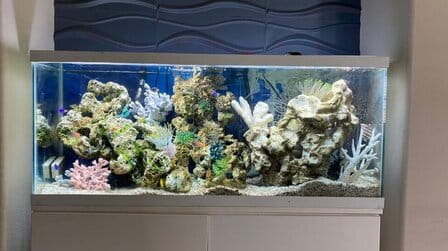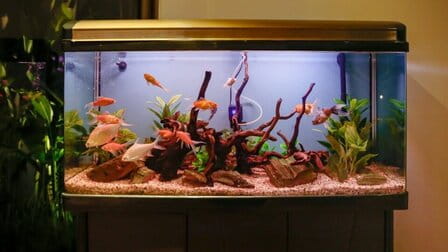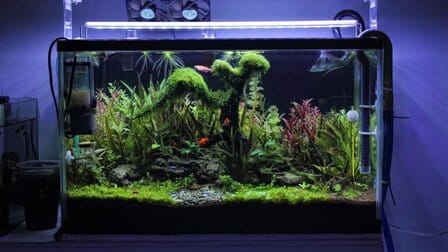With its clear water, brilliant corals, lively plants, and graceful fish, an aquarium can bring beauty to any space. But when an aquarium gets filthy, it may rapidly turn into an eyesore with cloudy water, excessive algae, floating trash, and diseased fish. Thankfully, maintaining a gleaming aquarium is simple. Here are some steps how to keep aquarium water clean.
How to Keep Aquarium Water Clean
Clear water in an aquarium is an indication of a healthy habitat. For fish to survive and grow, the water must be clean and healthy. The tank's ammonia, nitrite, and nitrate levels rise due to uneaten food, fish excrement, and plant detritus, making it dangerous. Here are some factors on list how to keep aquarium water clean:
Step 1: Perform regular water changes
Performing regular water changes is essential for keeping your aquarium water clean and healthy. Over time, pollutants and debris can build up in the water, leading to poor water quality and potential health issues for your fish and other aquatic animals.

To perform a water change, you'll need to:
- Prepare new water: Fill a clean container with fresh water and treat it with a water conditioner to remove any chlorine, chloramines, or other harmful chemicals.
- Turn off equipment: Turn off any equipment in your aquarium, such as filters, heaters, and air pumps.
- Remove old water: Use a siphon or gravel vacuum to remove a portion of the old water from the aquarium. Aim to remove about 10-20% of the water each week.
- Clean decorations and substrate: While siphoning out the water, use the gravel vacuum to clean any debris or waste from the substrate. Also, remove any excess waste or debris from decorations or plants.
- Add new water: Pour the new water into the aquarium. Make sure the temperature of the new water matches the temperature of the aquarium water.
- Turn on equipment: Turn on the equipment and make sure everything is working correctly.
- By performing regular water changes, you'll help to maintain clean and healthy water conditions for your fish and other aquatic animals.
Step 2: Use a high-quality filter
Using a high-quality filter is essential for keeping your aquarium water clean and healthy. A filter helps to remove impurities, debris, and waste from the water, creating a safe and healthy environment for your fish and other aquatic animals.
To use a filter effectively, you'll need to:
- Choose the right filter: There are several types of filters available, such as hang-on-back filters, canister filters, and sponge filters. Choose a filter that's appropriate for the size of your aquarium and the number of fish you have.
- Set up the filter: Follow the manufacturer's instructions to set up the filter. This usually involves attaching the filter to the back or side of the aquarium and connecting it to a power source.
- Clean the filter regularly: Over time, the filter can become clogged with debris and waste, reducing its effectiveness. Make sure to clean or replace the filter media regularly to ensure the filter is working effectively.
- Check the water flow: Make sure the water flow from the filter is strong enough to circulate the water in the aquarium. You may need to adjust the flow rate or position of the filter to achieve optimal water circulation.
- By using a high-quality filter and maintaining it properly, you'll help to keep your aquarium water clean and healthy. Remember to clean or replace the filter media regularly, and adjust the flow rate if necessary to ensure optimal water circulation.
Step 3: Avoid overfeeding
Overfeeding is a common mistake that can lead to excess waste and pollution in the aquarium. Fish only need a small amount of food each day to thrive, and overfeeding can cause health problems and poor water quality.

To avoid overfeeding, you'll need to:
- Feed only what your fish need: Only feed your fish as much as they can consume within a few minutes. Any excess food left uneaten will decompose and contribute to pollution in the aquarium.
- Feed a varied diet: Offer your fish a varied diet of high-quality fish food, including flakes, pellets, and frozen or live food. This will ensure they receive all the necessary nutrients and reduce the risk of overfeeding.
- Use an automatic feeder: If you're away from home or have trouble sticking to a feeding schedule, consider using an automatic feeder. This can dispense small amounts of food at regular intervals, ensuring your fish are fed without the risk of overfeeding.
- By avoiding overfeeding and providing a varied diet, you'll help to reduce waste and pollution in the aquarium. Remember to only feed your fish as much as they need and remove any excess food to prevent it from decomposing and polluting the water.
Step 4: Avoid overcrowding
Overcrowding is another common issue that can lead to poor water quality and health problems for your fish. When there are too many fish in the aquarium, there's an increased amount of waste and pollution, making it harder to maintain a clean and healthy environment.

To avoid overcrowding, you'll need to:
- Choose appropriate fish: When selecting fish for your aquarium, choose species that are appropriate for the size of your tank and the other fish you already have. Some fish are more active or produce more waste than others, so make sure you choose fish that are compatible with your setup.
- Provide adequate space: Make sure your fish have enough space to swim and thrive. Avoid cramming too many fish into a small tank, and provide plenty of hiding places and decorations to create a comfortable environment for your fish.
- Monitor fish behavior: Keep an eye on your fish to make sure they're healthy and active. If you notice any signs of stress or aggression, it may be a sign that they're overcrowded or incompatible with other fish in the tank.
- By avoiding overcrowding and providing adequate space for your fish, you'll help to maintain a clean and healthy aquarium environment. Remember to choose appropriate fish, provide enough space, and monitor fish behavior regularly.
Step 5: Maintaining the right water parameters
Maintaining the right water parameters is crucial for keeping your aquarium water clean and healthy. Fish and other aquatic animals have specific requirements for water temperature, pH, hardness, and other factors, and even slight changes in these parameters can have a significant impact on their health and well-being.

To maintain the right water parameters, you'll need to:
- Test the water regularly: Use a water testing kit to check the levels of ammonia, nitrite, nitrate, pH, and other factors in the water. Test the water at least once a week, and more frequently if you're having issues with water quality or fish health.
- Make adjustments as necessary: If the water parameters are out of the recommended range, make adjustments as necessary. This may involve adding chemicals to adjust the pH or hardness, or performing water changes to reduce ammonia or nitrate levels.
- Monitor temperature: Make sure the water temperature is within the recommended range for your fish species. Use a thermometer to check the water temperature regularly and adjust the heater as necessary.
- By maintaining the right water parameters, you'll help to create a clean and healthy environment for your fish and other aquatic animals. Remember to test the water regularly, make adjustments as necessary, and monitor the temperature to ensure optimal conditions for your fish.
Step 6: Monitor water parameters
Keep an eye on the water's pH, ammonia, nitrite, and nitrate levels. If any of these levels become too high, it can harm your fish.
Step 7: Use live plants
Live plants can help to absorb excess nutrients and pollutants in the water. They also provide oxygen for your fish and other aquatic animals.
By following these tips, you can maintain a clean and healthy aquarium environment for your fish and other aquatic animals.
Conclusion
Following each of these instructions on list how to keep aquarium water clean to solve the main issues that might lead to cloudiness in your tank and contribute to the creation of a flourishing environment for your fish, making the dream of a crystal-clear paradise a reality. Recurring discoloration or cloudiness shouldn't be fixed right away because it frequently gets better naturally as part of your tank's cycle. Browse our whole aquarium selection and stock up on everything you need to maintain the purity of the water in your tank!

